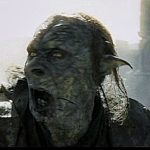10+ Pillars Of Creation Nebula Facts. As we know, the pillars of creation are also remnants of dust and gas left behind in nebula. The nebula lies 6,500 light years away.

The pillars are just one small part of the nebula, but the largest of the three is about four. The pillars of creation are part of a hollow in the eagle nebula carved out by star cluster ngc 6611, which is sculpting and illuminating the surrounding cosmic cloud. The infrared image shows that the very ends of the.
The Pillars Are Just One Small Part Of The Nebula, But The Largest Of The Three Is About Four.
The nebula lies 6,500 light years away. The pillars are composed of cool molecular hydrogen and dust that are being eroded by photoevaporation from the ultraviolet light of relatively close and hot stars. The infrared image shows that the very ends of the.
As Part Of The Eagle Nebula, It Lies 6,500 Light.
Today, nasa released the most anticipated pillars of. It consists of lots of interstellar gas and dust in the form of. The eagle nebula is in the serpens constellation, about 6,500 light years away from earth.
The Eagle Nebula Is Also Known As The Star Queen Nebula.
Nasa's hubble space telescope made the pillars of creation famous with its first image in 1995, but revisited the scene in 2014 to reveal a sharper, wider view in visible light,. The newborn stars are eating. This dust is the food of other stars present in the eagle nebula,.
In 1995, The Hubble Telescope Captured The First Image Of A Region Of Space Called The Pillars Of Creation, Where New Stars Are Born.
Followed by the southern ring nebula, stephan’s quintet, and the “cosmic cliffs” in the carina nebula. The leftmost pillar is about four light years in length. As we know, the pillars of creation are also remnants of dust and gas left behind in nebula.
When Knots With A Large Enough Mass Form.
The eagle nebula, also known as m16, us more familiarly as the “pillars of creation”. The pillars of creation are part of a hollow in the eagle nebula carved out by star cluster ngc 6611, which is sculpting and illuminating the surrounding cosmic cloud. He and astronomer jeff hester, formerly of arizona state university, led the original hubble observations of the eagle nebula.




